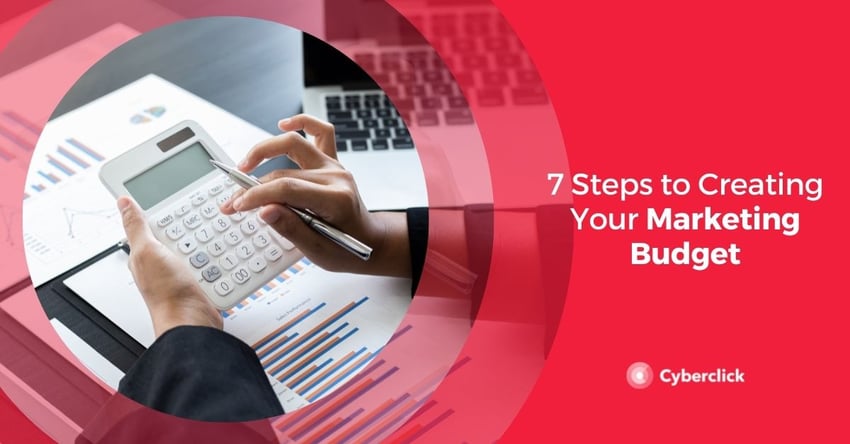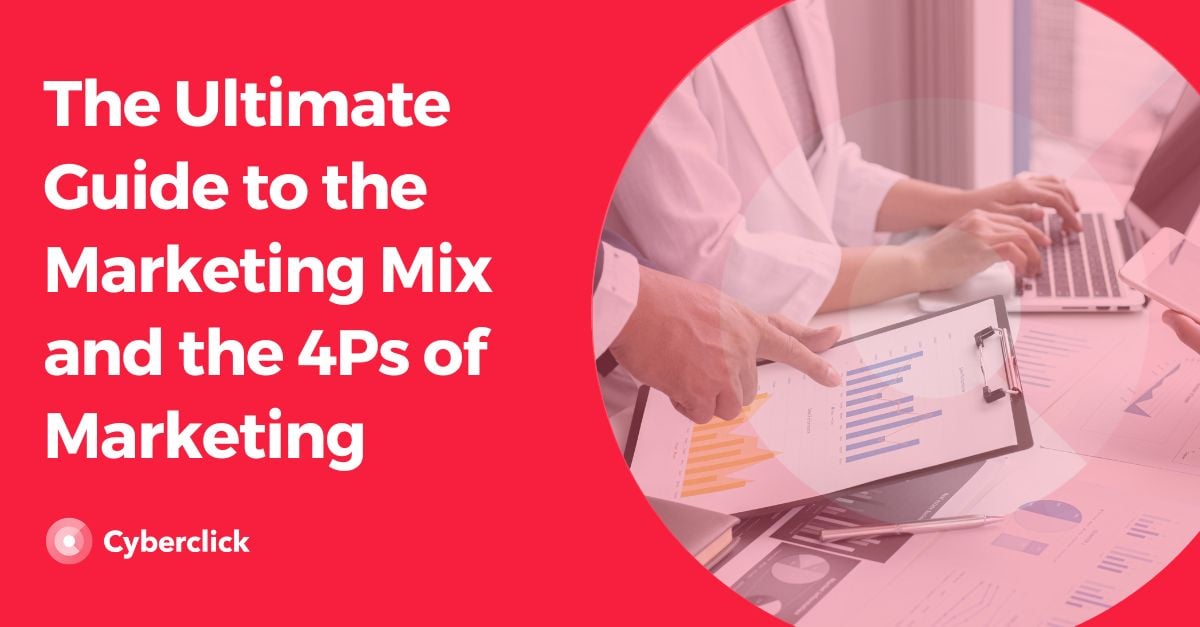Marketing is one of the most significant investments a company makes, and as such, it can represent an important part of its annual expenses.
To properly manage this expense and ensure that you are getting a good return on investment, it is essential to develop a marketing budget. Only then can you be sure that your actions are yielding results. To help you with this, let's take a look at what exactly a digital marketing budget is, what it should include, and how to prepare it step by step.

What Is a Digital Marketing Budget?
A digital marketing budget is a document that details all the money that a company intends to spend on marketing actions during a given period.
The budget should include the necessary expenses to implement the different digital marketing strategies that you have defined for your business, such as search engine advertising, content creation, SEO, etc. The goal is to be able to prioritize the different expenses, have a good planning and correctly assess the return on investment.
There are many reasons to develop a digital marketing budget, such as:
-
Controlling the company's marketing costs. The marketing budget makes it easy to break down total and line-item costs and to take action if spending exceeds expectations.
-
Clearly setting objectives in terms of return on investment. Spending in different areas will be allocated according to the company's priorities and the results you hope to achieve, which will give you a much clearer picture of how your marketing efforts are performing.
-
Prioritizing the budget. As you'll see below, there are many areas of expenditure which you can allocate your digital marketing budget to. Stopping to draw up a budget will help you prioritize spending according to your objectives.
-
Evaluating the return on investment of each action. Having a complete breakdown of costs makes it possible to then compare them with the results of each action and identify which areas provide a higher ROI.
-
Long-term planning. A digital marketing budget is for a specific period (usually a quarter or a year), so it makes you specify what actions you are going to carry out and better organize the work of your marketing department.
-
Having a reference history. Budgets from previous years can serve as a guide to assess results and introduce necessary changes without having to start from scratch. They also help you understand how the company's marketing expenditure is evolving.
7 Steps to Building Your Digital Marketing Budget
1. Know Your Target Audience
In order to define your budget, you first need to know what your project is and who it is aimed at.
If you haven't already done so, it's time to sit down and create your buyer persona or ideal customer profile. You should also be very clear about the customer journey. Finally, you should assess the current state of your company's digital presence.
With all this data, you will be able to better identify which channels and actions you should invest in.
2. Do the Math
The first step in preparing a digital marketing budget is to estimate the gross revenue for the period to be budgeted, based on previous results and estimates from the marketing department.
based on this amount, you will decide the percentage allocated to marketing, which will depend on the company's situation. As a general guideline, it is recommended that new companies allocate between 12 and 20% of their gross revenues to marketing, while established companies should allocate between 6 and 12%.
Finally, you still need to know what percentage of this investment you are going to dedicate to digital marketing and how will go toward more traditional media. Here you must assess the situation of your industry and your company. Some companies still have to allocate a considerable amount to traditional marketing, while others operate 100% digitally.
3. Establish a Rate of Return
Based on the aforementioned forecasts, you need to know what benefits you can expect to obtain from your various marketing efforts in order to set specific objectives. In this step it can be useful to review previous budgets to see where you want to increase or decrease spending.
4. Define Your Objectives
The figures you defined in the previous sections will serve as a guideline for setting precise marketing objectives in the short, medium and long term.
When setting objectives, the acronym "SMART" is a simple starting point. It includes the following points:
-
Specific: objectives must be detailed and concrete in order to be useful.
-
Measurable: in marketing, what cannot be measured does not exist.
-
Attainable: you must set realistic objectives that are challenging but not beyond the reach of your team.
-
Relevant: digital marketing objectives must be relevant to the company and related to its overall goals.
-
Time-bound: objectives must have a deadline.
5. Determine the Strategies
You already know what you want and where you are starting from, so the time has come to define the path to follow to achieve the desired results.
Within digital marketing there are many possible strategies. In the following section we will explain some of the most common ones and their associated costs. In this step, evaluate the different options available and choose the ones that best suit the needs of your brand.
6. Estimate Expenses
This will be the moment to adjust and distribute the amount allocated to different departments, projects, etc. Don't forget to take possible personnel costs into account. Sometimes, you may have to re-prioritize strategies and actions to fit the available budget.
In the following section we give some examples of the most common costs within the digital marketing budget.
7. Allocate an Amount for Contingencies
Drawing up a marketing budget helps you plan for the long term, but you should never forget that there may be circumstances beyond your control (as 2020 showed us).
Therefore, a digital marketing budget should always include an amount earmarked for contingencies. For example, a PR budget to deal with a reputation crisis, an opportunity you can't miss, or extra training for your team on a new technology.
How to Allocate Your Digital Marketing Budget
Finally, let's take a quick look at what the 5 main areas of spending in a digital marketing budget are, and the potential costs for each.
1. Web Design
A website is the "center of operations" in a digital marketing strategy, so it makes sense that it should also be one of the main areas of focus in the budget.
In addition to the initial creation of your website, the digital marketing budget should include expenses such as domain, hosting or maintenance, as well as design improvements and the creation of new sections or content.
As for the costs in this section, they largely depend on the capacity you need. The design of a basic web can be around 500 dollars, although it can go much higher depending on the customization. You will also have to take into account the design and visual elements of the web and the creation of any copy you want to include in it.
2. Organic Positioning (SEO)
Spending here will be concentrated mainly on these items:
-
Paid SEO tools, if needed.
-
Content creation (between 30 and 80 dollars per article).
-
SEO on page and off page performed by professionals.
3. Pay-Per-Click Advertising (PPC)
This includes paid search engine advertising (SEM), social ads, and display ads. All of them contribute to increasing your brand's visibility and generating leads and conversions.
The digital marketing budget in this section can be very flexible. The minimum budgets for different PPC platforms are usually a few dollars per day, but the more you raise them, the faster you will get results.
4. Marketing on Social Networks
Social media marketing can be a great strategy to reach your target audience. Encourage engagement, create community and attract visitors to your website.
Since these are organic channels, social networks do not have a basic cost, but you must have the necessary resources to develop copy and images and assess whether you want to use the services of a professional social media manager.
5. Email Marketing
Email marketing is one of the channels with the highest ROI, so it is a good idea to include it in your marketing budget.
When accounting for expenses, keep in mind that you will need email marketing software. If you are just starting out and have a limited number of contacts, you can find tools (both free and paid) that will help you find contacts and grow your database. You may also want to hire the services of a copywriter to help you with writing emails.
Responsable de la estrategia de contenidos y visibilidad en Cyberclick, con enfoque Allbound y especialización en posicionamiento SEO, GEO y automatización con IA. Gestión avanzada del CRM con HubSpot: base de datos, workflows, lead nurturing, scoring y reporting. Experiencia en marketing digital, comunicación corporativa y periodismo, uniendo estrategia, creatividad y tecnología para captar y convertir leads cualificados.
Responsible for content and brand visibility strategy at Cyberclick, with an Allbound approach and specialization in SEO, GEO (Generative Engine Optimization), and AI-powered automation. Advanced HubSpot CRM management: database segmentation, workflows, lead nurturing, scoring, and reporting. Background in digital marketing, corporate communications, and journalism—combining strategy, creativity, and technology to attract and convert qualified leads.





.jpg)
Leave your comment and join the conversation